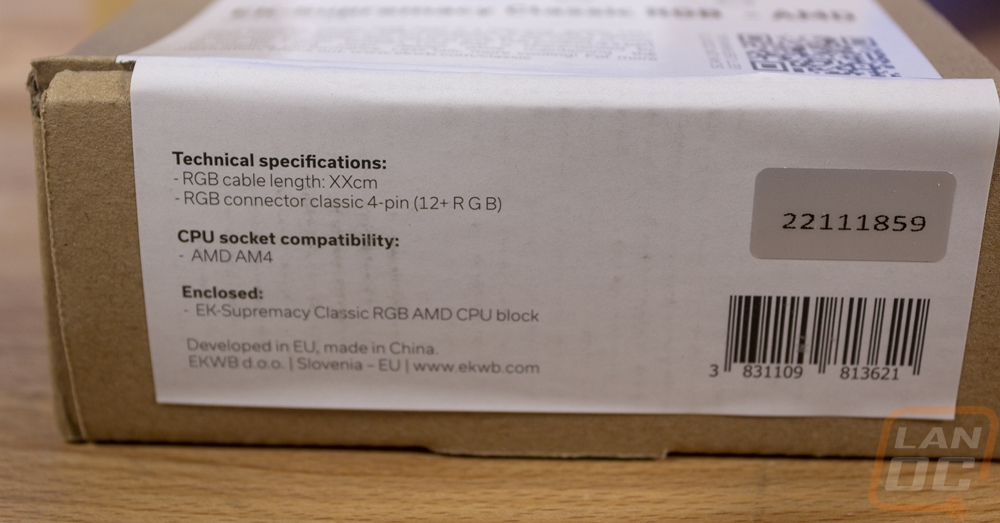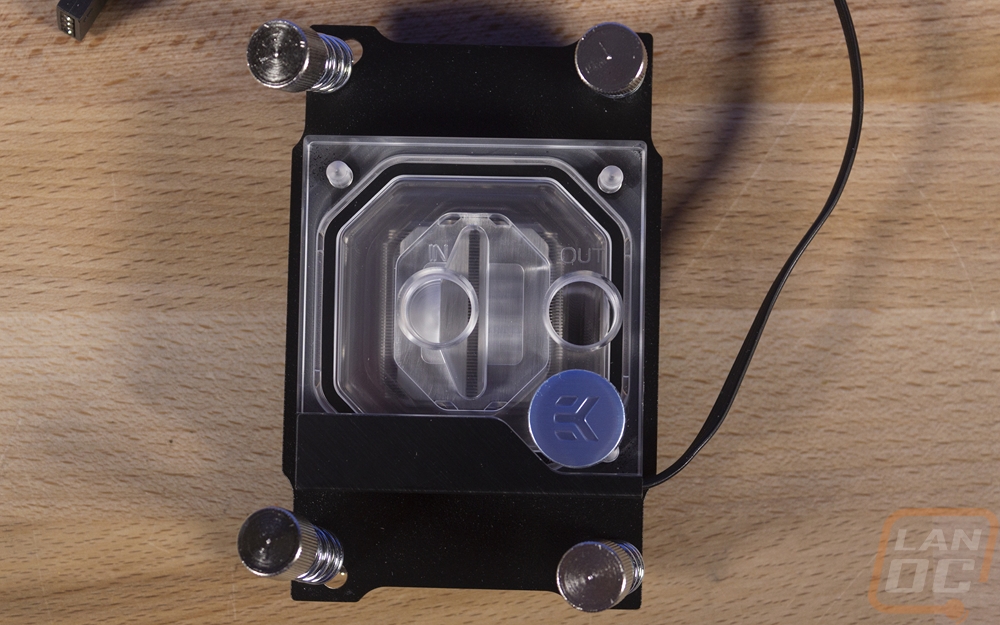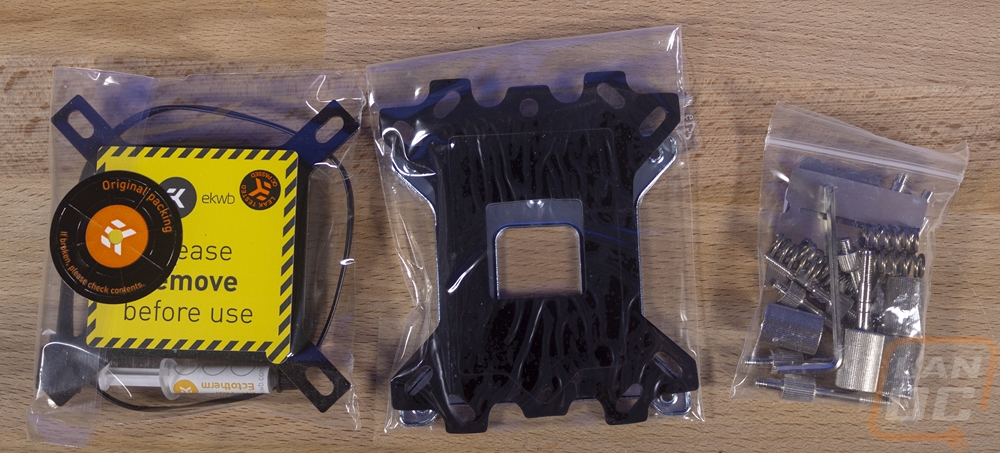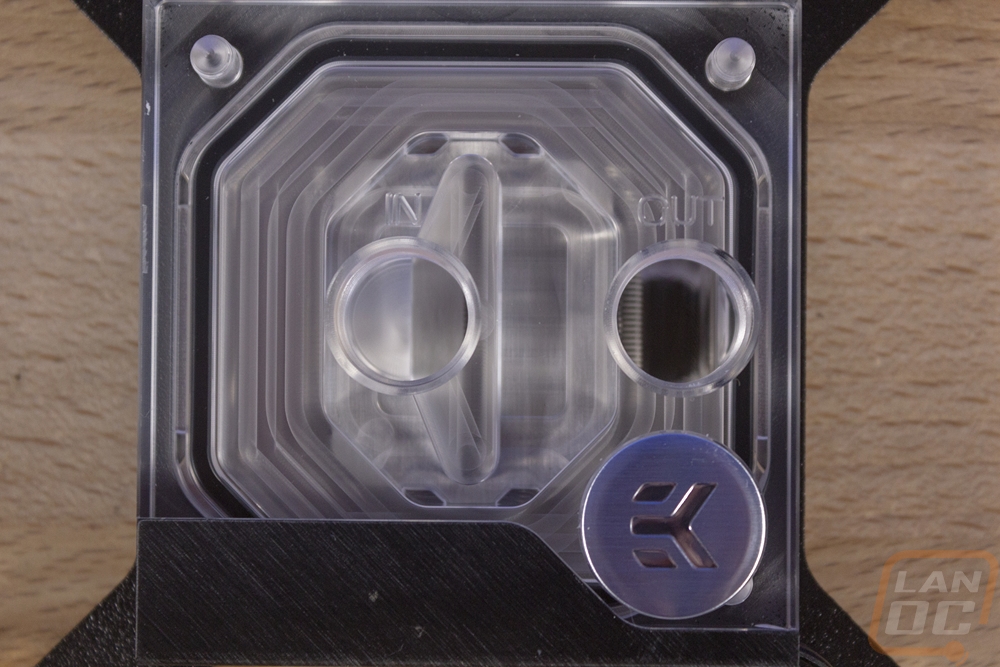Like just about every other product on the market, RGB has been popping up in the water cooling market for a while now. It started on Monoblocks and EK even had it on their new Velocity line of water blocks. But their Supremacy water blocks have mostly been lacking with the exception of the Threadripper block. But at CES this year they have introduced their new lineup called the Classic RGB. They characterize it as “minimalistic and clean while maintaining class-leading performance”. That explains the Classic part of the name, but the second half also indicates that the new lineup has also added RGB lighting as well. I’ve actually had most of the components in the office to check out and now that the cat is out of the bag I can share them with everyone. So today I’m going to check them out and do a little testing as well.
Title: EKWB Classic RGB Lineup
Review Samples Provided by: EKWB
Written by: Wes Compton
Pictures by: Wes Compton
Amazon Affiliate Link: HERE
Supremacy Classic RGB
You can’t really have a new product line without CPU water blocks, especially when you are EKWB, WB standing for Water Blocks. For CPU water blocks they have kept things very simple with just two blocks. One is the EK Supremacy Classic RGB AMD and the other is the Supremacy Classic RGB Intel. They don’t (at least right now) have any other options. Both came in the Nickel plated and plexi configuration and there aren’t any other variations on the books right now. I’m okay with that because I think the clear Plexiglass with the shiny nickel plating is the best looking for most builds.
I love EK’s packaging, you get all of the information you need on the white sticker including a line drawing of the water block and a short description of the block and the Classic RGB lineup. Then down along the side, they have specifications and the serial number. You will notice that they have just focused on AM4 support. AM4 has been out long enough at this point that I don’t think many people are looking to water cool their old AM3 system so I don’t think that is a big deal.


In fact, with this supporting just the one socket it simplifies a lot of things. When you open the box up the block comes pre-assembled and wrapped up in a bag with a small tube of thermal paste. You need to take the two layers of plastic off of the EK logo on the block and the sticker off the bottom, but I love that you can use this out of the box. Normally with water blocks, and you will see this with the Intel, they support multiple sockets so you have multiple backplates, mounting screws, and sometimes even different springs that you use depending on the socket. Speaking of which, the AM4 block doesn’t come with a backplate at all thanks to AMD using a solid metal backplate with their socket stock. So installation here is as simple as removing the AMD brackets, putting thermal paste on the CPU, then using the built-in thumb screws to tighten the block down.


Dimensionally the Classic RGB is the same size as the Intel with that square shape. It's only the AMD bracket that gives it that tall look. The mounting bracket is powder coated in a nice texture black and if you look closely you can see that the bracket is all one piece. The other thing that stood out to me is the bracket is actually slotted, so AM3 support is there you will just need the different mounting screws.

So what sets this block apart from the other Supremacy blocks from EK? Well in most ways this is just like the Supremacy Evo lineup with the exception being the only nickel and plexi blocks they have are for the sTR4 and for X99. The top block on the Classic RGB mixes the transparent look with a black metal portion down at the bottom. The black cover at the bottom of the block is there to mount and cover the built-in RGB. If the Classic RGB name wasn’t obvious enough, yes these products all have RGB lighting. These blocks specifically have an RGB strip with three RGB LEDs on them down at the bottom. The black cover helps prevent the LEDs from being seen directly and letting the plexi top diffuse the lighting.


If you have only ever worked with All in One loops you would be really blown away with the finish that EK runs on the bottom of these blocks. Look at that perfect reflection. The nickel finish looks amazing, turning that smooth finish into a mirror.


As far as styling goes, some may miss the circles, and frankly, when I saw the word classic in the name I thought maybe these blocks would have the circles. But all you really need for that classic EKWB look is their EK logo, simple and to the point.

Like I mentioned earlier, the AMD bracket is all one piece and in fact, it is locked into place between the nickel and plexiglass portions of the block. Pulling the four screws out of the bottom gets everything apart for cleaning and if you want you can convert this to Intel or narrow ILM LGA-2011 using the brackets EK sells on their website. You can also switch over to a full nickel plated bracket as well or you can refinish your black bracket to match the color of your build. It is also important to note that the bracket can be flipped horizontally if your motherboard orientation requires it to keep the waterblock top still oriented correctly. That isn’t needed with the Intel bracket, but with AMD's longer shape it is nice to know you aren’t locked in one way.


One rubber o-ring tucked into the octagon shaped grove is what keeps everything sealed together. You can see that this grove sits higher than the mounting bracket grove so the o-ring sits directly on the machined bottom for that perfect seal. The base of the Classic RGB does have the same layout as the Supremacy EVO and EK sells replacements of those as well in both Nickel and copper finishes, same with the o-ring.


The Intel model oddly enough doesn’t have the Intel name in the model name like the AMD model does. But the box is exactly the same with the exception of the new line drawing and a longer list of CPU sockets supported in the specifications on the side of the box.


Now when you get inside of the box there is one major difference between the Intel and AMD Supremacy Classic RGB’s. Where the AMD model came together and with no other parts. The Intel model needs a big pile of accessories to have that multi-socket support. In addition to the water block and thermal paste that comes in one bag. You have a bag with the backplate and rubber seal (notice that has Intel and AMD holes) and then a mounting bag. This gets you two sets of mounting brackets depending on if it is LGA-2011 with its own backplate or the rest of Intel’s mainstream lineup. There is one set of springs, washers, and thumbscrews that work with both mounting bolts. Then you have two replacement jets. Those are the thin razor blade looking plates. These change the restriction and flow depending on your CPU socket. The third is pre-installed in the block itself.



Both the AMD and Intel blocks have the same base components so it's no surprise that this black has that same amazing mirror nickel finish. I love that reflection.

So the big difference here is the Intel X shaped bracket. Beyond that, we have the same black brushed metal finish on the bottom edge that covers up the RGB lighting. You can see how the RGB light cable runs out on the bottom right from behind the cover. The plexi top cover is thick and all one piece. The name of the block isn’t cut into the side like with the original Supremacy Evo, but otherwise, it looks a lot like it, only with that black accent at the bottom.



I mentioned the lighting, but I should also point out that the RGB cable with both water blocks is about a foot long and has the traditional four pin header. This will plug right into most motherboards, assuming the plus is in the top portion of the board, reachable from the CPU socket. If you want to run more than just one you might have to get creative with a splitter, especially if you want to run all three of the Classic RGB components, most motherboards don’t have three RGB plugs supported.


